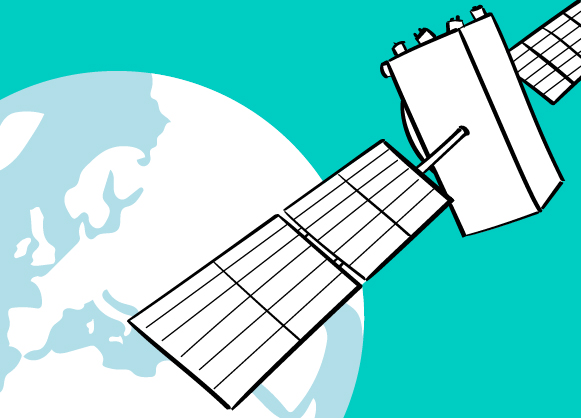Newsletter September 2023

Watching from Space: Earth Observation
These vantage points, orbits which lie 160-1000 km above the Earth, are home to approximately 1200 Earth observation (EO) satellites. Despite their apparent distance from Earth, these satellites play a key role in tasks such as environmental monitoring (climate change, deforestation, biodiversity, natural disasters, natural resources), weather forecasting and mapping. They are thus an integral part of global research and innovation activities, including Horizon Europe.
Europe’s monitoring programme Copernicus is certainly one of the most well-known EO systems. Its core component is a set of large satellites, the “Sentinels”, working in conjunction with other satellites and with on-ground measurements. The miniaturisation of electronics and the reduction in launch prices now allow private enterprises to enter the market with smaller satellites, often in constellations. Today, roughly half of EO satellites are privately owned.
EO is widely applicable in research and innovation, as evidenced by the fact that all the Clusters in Horizon Europe include topics in which satellite imagining can contribute to the expected project outcomes and impacts. These are easily identified, since the topic description and/or the eligibility conditions state, “If projects use satellite-based earth observation, positioning, navigation, and/or related timing data and services, beneficiaries must make use of Copernicus and/or Galileo/EGNOS.”
The amount of data provided by EO is so large that until recently only limited analyses were possible. However, supercomputers and artificial intelligence have now opened up new perspectives on how this data can be used. An example of this is the European Commission’s Destination Earth initiative, which is developing an accurate digital model of the Earth on a global scale. This model will monitor, simulate and predict the interaction between natural phenomena and human activities.
Interested in knowing more? Euresearch is always at your disposal to discuss further details!
Author: Matthew Whellens, National Contact Point for Industry and Space
Illustration: Alexandra Rosakis



_teaser.png?lm=1692949387)
_teaser.png?lm=1692949396)
_teaser.png?lm=1692949421)
_teaser.png?lm=1692949432)
_teaser.png?lm=1692949441)
_teaser.png?lm=1692949457)
_teaser.png?lm=1692949467)
_teaser.png?lm=1692949484)
_teaser.png?lm=1692949492)